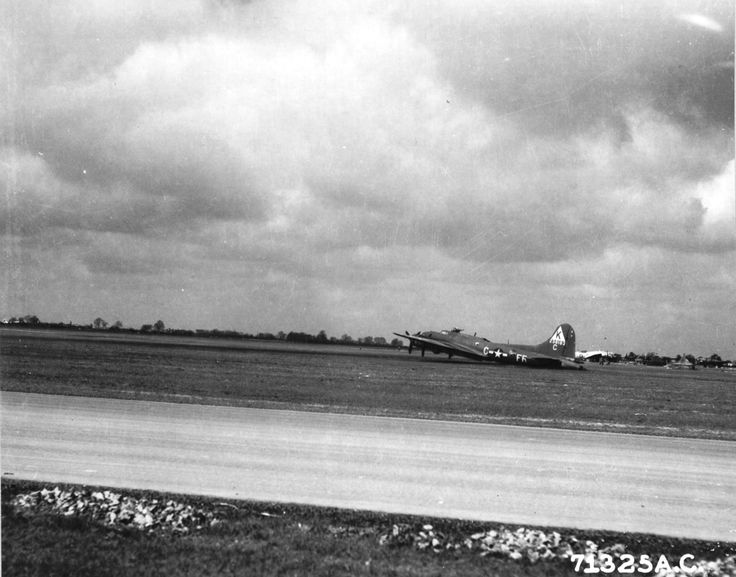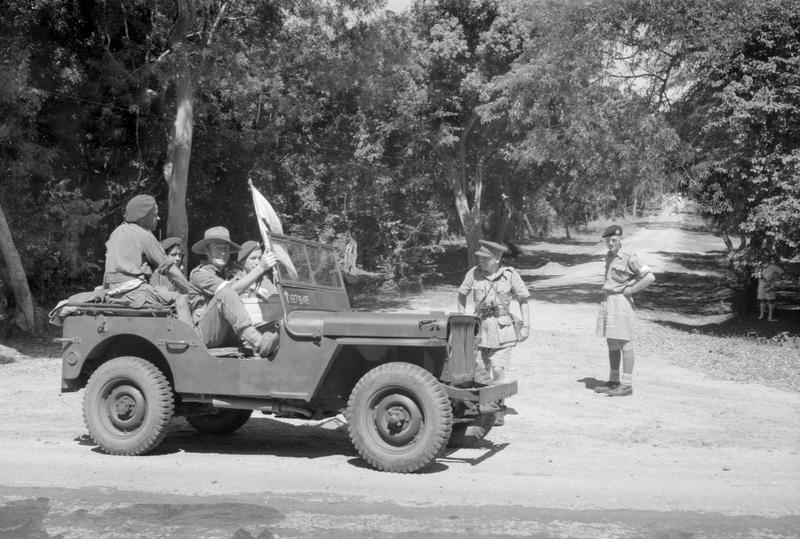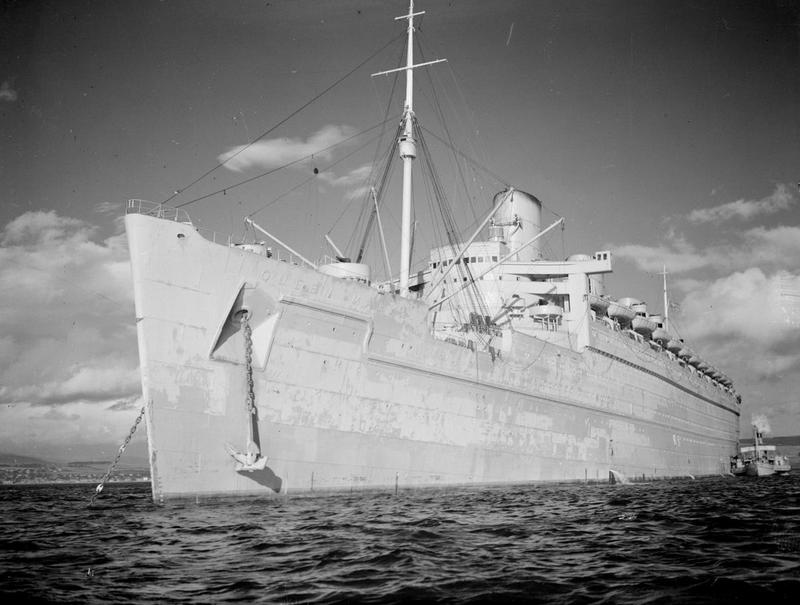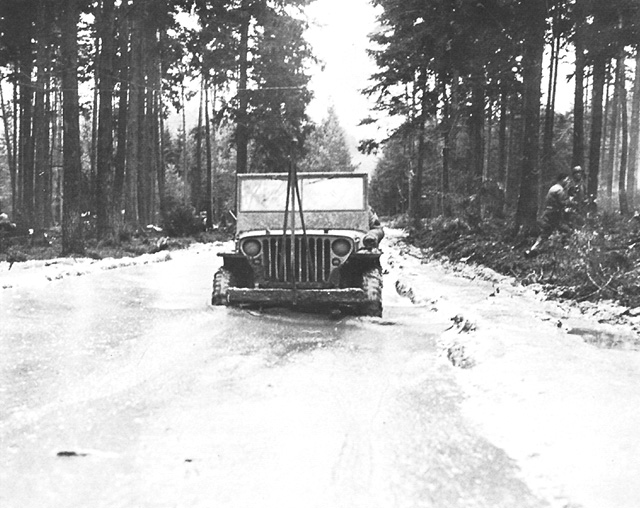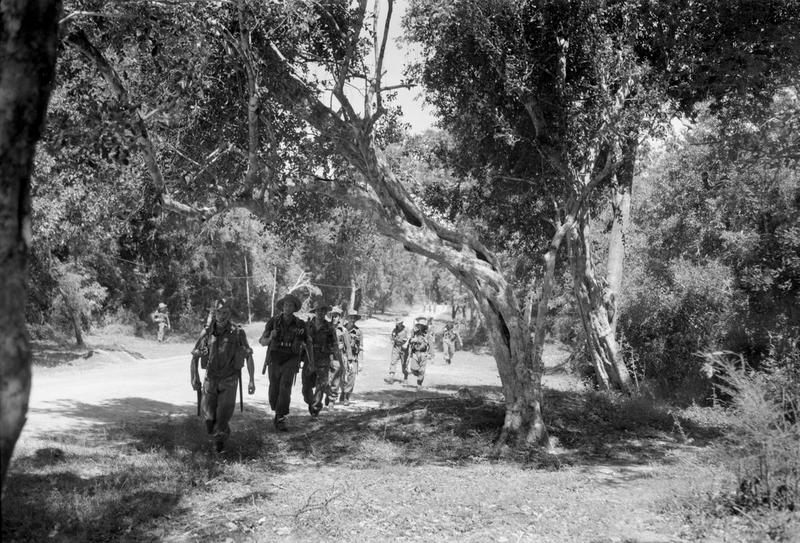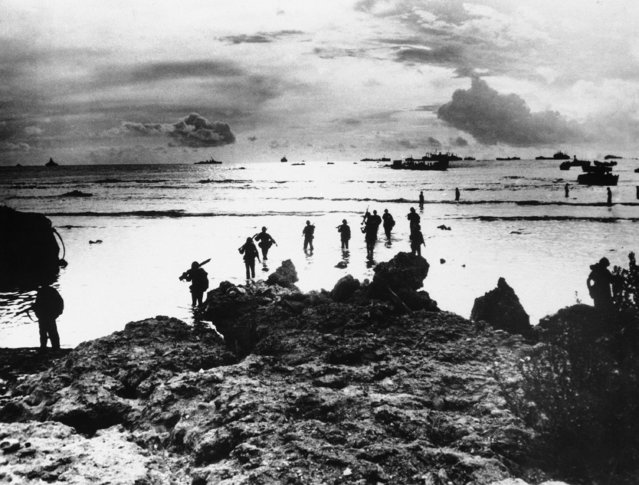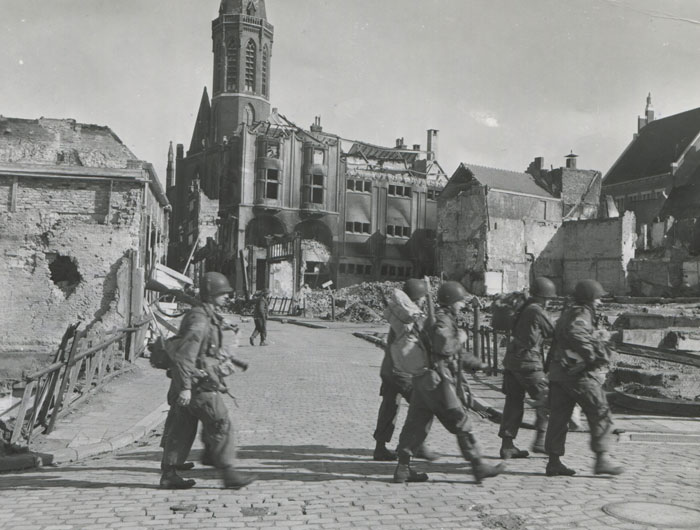Air Operations, Bonin Islands
30th Heavy Bomb Group B-24s based at Saipan attack Chichi Jima.
[Air Operations, Carolines
20 VMF-114 F4Us bombard Ngesebus Island, just north of Peleliu, as US Msrines mount an amphibious assault.
[Air Operations, CBI
BURMA4 10th Air Force P-47s attack Mawhun and Nansiaung.
CHINA- 26 308th Heavy Bomb Group B-24s attack Samshui.
- 31 341st Medium Bomb Group B-25s attack the Tienho and White Cloud airfields at Canton, two occupied towns, and road traffic in east-central China.
- 14th Air Force fighter-bombers mount more than 100 effective sorties against numerous communications targets and troop concentrations in east-central and southwestern China and northern French Indochina.
- P-51s with the 51st Fighter Groupís 26th Fighter Squadron down 2 Japanese fighters in an afternoon engagement near Samshui.
Air Operations, East Indies
- FEAF B-25s attack small vessels off Kairatoe, Celebes.
- V Bomber Command A-20s attack the Langoan airfiel on Ceram.
- FEAF P-38s attack barges and the town area at Pajahi in the Molucca Islands.
Air Operations, Europe
RAF BOMBER COMMANDDaylight Ops:
- 494 aircraft of Nos. 1, 3, 6 and 8 Groups are sent to attack 4 German positions at Calais and 6 battery positions at Cap Gris Nez. In the aircraft total are 230 Lancasters, 214 Halifaxes, and 50 Mosquitos. About 50 aircraft are assigned to each position. Only 68 aircraft bomb at Calais before the Master Bomber cancels the raid because of worsening cloud conditions and only 198 out of 301 aircraft bomb at Cap Gris Nez. Calais will surrender to the Canadian Army soon after this raid and all the French Channel ports will be thus in Allied hands, although most of the facilities require extensive clearance and repair. This, and the continuing presence of German troops along the River Scheldt between Antwerp and the sea, will cause the Allied ground forces serious supply difficulties for several more weeks.
- There are no losses.
- 2 Liberators and 2 Wellingtons are on signals investigation patrols, 10 Hudsons and 2 Lysanders are on Resistance operations, and 75 Halifaxes are on fuel-carrying flights.
- There are no losses.
Minor Ops:
- 44 Mosquitos are sent to Brunswick, 5 to Heilbronn and 4 to Aschaffenburg, and there are 52 Mosquito patrols and 43 RCM sorties.
- 1 Mosquito Intruder is lost.
FRANCE:
- 194 8th Air Force B-24s transport fuel to France.
- Only 23 of 417 1st Bomb Division B-17s are able to locate and attack their primary target, an oil plant at Magdeburg, in bad weather.
- 359 B-17s attack the city of Magdeburg and 35 others attack targets of opportunity.
- 243 2nd Bomb Division B-24s attack a motor-vehicle plant at Kassel.
- 301 3rd Bomb Division B-17s attack an oil plant at Merseburg.
- 34 heaby bombers are lost, 23 of which are downed in particularly violent Luftwaffe fighter attacks over Magdeburg
- Escort for the heavy bombers is provided by 646 VIII Fighter Command fighters. The fighter pilots down 30 Luftwaffe aircraft over Germany between 1130 and 1750 hours.
- 7 fighters are lost with their pilots
FRANCE:
- 37 9th Bomb Division B-26s and A-20s attack German Army defenses.
- 9th Air Force P-47s attack three German Fortresses near Metz with high-explosive bombs and napalm.
- 9th Air Force fighter-bombers attack rail lines west of the Rhine River.
ITALY:
- All 12th and 15th Air Force bombers are grounded by bad weather, but some XII Fighter Command fighter-bombers are able to attack roads and rail lines in reduced strength.
Air Operations, New Guinea
V Fighter Command P-47s attack the airfield at Manokwari.
[Burma-India
The British XV Corps receives orders to go over to the offensive on the Arakan front to drive the Japanese from the area of Chittagong and from the estuary of the Naaf River.
[Eastern Front
The Russian 57th Army, with 9 divisions, moves from Vidin in Bulgaria into Yugoslavia, heading for Belgrade.
SOUTHERN SECTORGagen's 57th Army attack from Vidin toward Belgrade but meet determined resistance from Army Group F.
[Occupied Greece
All Greek Resistance groups and political factions agree to accept orders from the Allied Supreme Commander in the Mediterranean and from Lt-Gen Ronald Scobie, commander of Allied operations in Greece.
[Pacific
The US submarine Bonefish (SS-223) sinks the Japanese merchant tanker Anjo Maru (2068t) in the South China Sea.
[Palaus
At 9:00a.m. units of the 5th Marines, supported by artillery, tanks and figher-bombers taking off from Peleliu airfield land on the islet of Negesbus and on Kongauru, and begin to clear them of the enemy. There is little fighting on either. The Ngesebus airfield is almost entirely captured by 3:00p.m.
On Peleliu itself , where bad weather has set in, the full-scale US attacks come to an end but bitter fighting continues all around Mount Umurbrogol as the Americans keep trying to eliminate individual Japanese positions.
On Angaur mopping up continues in the Lake Salome area.
[Western Front
The Canadian 3rd Div succeeds in penetrating into the defenses of Calais. After further heavy bombing by the RAF the Germans surrender the Calais Citadel.
German frogmen attempt to blow up the bridge over the Waal River at Nijmegen.
[Images from September 28, 1944
|
|
|
|
|
|
|
|
